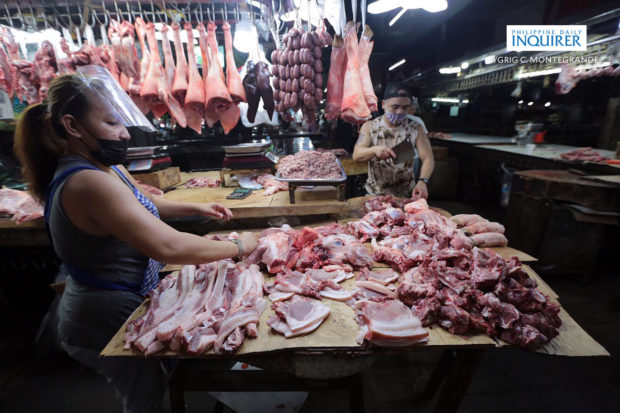PH meat imports fall; Pinoys eat less pork, beef
MANILA, Philippines — The country’s meat imports fell by 4 percent in the first eight months of the year as Filipinos consumed less pork and beef amid rising global market prices.
The volume of imported meat decreased to 817.35 million kilograms from January to August this year from 851.84 million kg in the same period a year ago, based on the latest data from the Bureau of Animal Industry.
“Importers are now feeling the effects of the low consumption coupled with high prices abroad,” Meat Importers and Traders Association president emeritus Jesus Cham said in a message.
“Market has been very tough and [we] hear [that] many importers are lying low. It would not be surprising for importers to be more conservative,” Cham said.
In August alone, the Philippines imported 115.11 million kg of meat, down 1.5 percent from the past year. But last month’s volume of imported meat and meat products improved from the volume in July, ending a three-month downtrend.
For the eight-month period, pork imports made up nearly 50 percent of total volume, down 12.7 percent. Chicken came next with 35.4 percent, up 18.3 percent. The Philippines procured 91.68 million kg of beef, down 16.7 percent.
Buffalo totaled 29.31 million kg. Likewise, the country purchased 563,298 kg of lamb, 229,302 kg of duck and 168,697 kg of turkey.
BAI data revealed that Brazil was still the country’s leading source of imported meat with a share of 32.2 percent. It exported mostly chicken with 166.15 million kg.
The United States followed with 142.25 million kg, primarily chicken and Spain with 102.41 million kg of mostly pork.
The United Nations’ Food and Agriculture Organization (FAO) earlier projected that the country would likely import less pig and more poultry meat this year on the back of growing internal demand amid tight domestic supplies, high prices, more active food services sales, and relative affordability.
However, the rising availability of local supply and declining consumer purchasing power amid high food prices and economic downturns are seen to reduce demand from most meat-importing countries, partially offsetting price increases, the FAO said.
Lower tariffs on certain food items have been extended until December this year. The “most favored nation” rates on fresh, chilled or frozen meat remained at 15 percent (in-quota) and 25 percent (out-quota).

